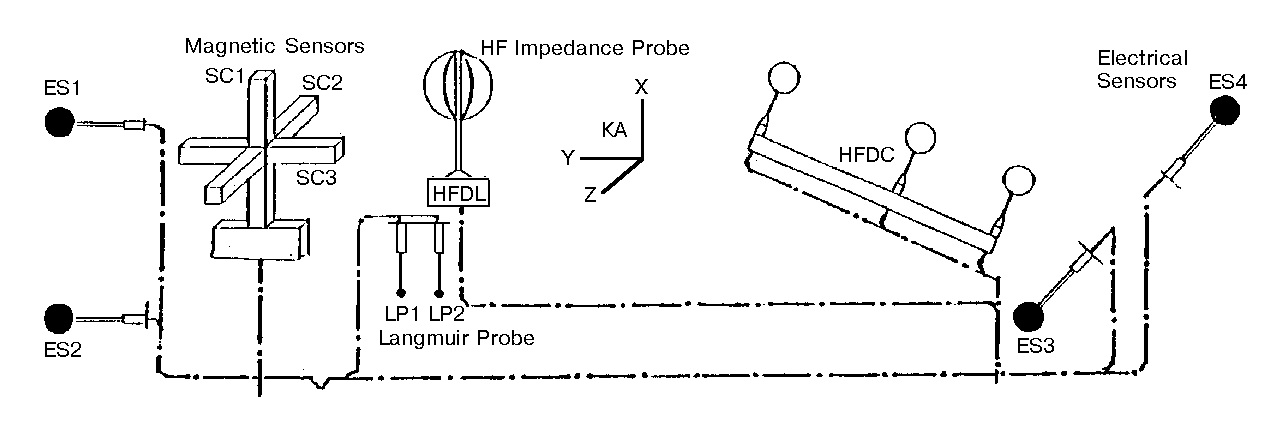
|
Experiment: ELISMA
WAVE COMPLEX
ELECTROMAGNETIC STUDIES OF MARS
Main scientific objectives:
solar wind interaction with the Martian plasma environment; the structure of the bow shock and planetopause;
identification of instabilities in the ionosphere and magnetosphere;
study of waves of atmospheric origin generated by sand storms and lightnings;
global mapping of plasma convections;
distribution of thermal plasma temperature and density to an altitude of 300 km;
dynamic relationship between the upper atmosphere and the lower ionosphere.
COMPLEX includes :
electric field sensors (3 double Langmuir probes consisting of four noncoplanar identical spheres mounted on booms);
magnetic field sensor ( three orthogonal Search Coil (SC) sensors )
Langmuir Probe;
high frequency (HF) and mutual impedance (MI) probe;
analyzers of the frequency spectrum of physical parameters to be measured;
microprocessor system.
| Parameters to be measured:
| |
| |
| Electric field, (Ex , Еу , Еz ),frequency range | 0 - 2 x 105 Hz; |
| Magnetic field, (Вх , Ву , Вz ), frequency range | 10-1-2 x 103Hz; |
Electron number density, Ne
| |
| Langmuir probe | 10-105sm-3; |
| mutual impedance probe | 10-102sm-3 ; |
| frequency range | 0-103 Hz; |
| Electron temperature, (Те ) | 0,1-10 eV |
| Mass | 12kg |

Cooperation:: Bulgaria, Great Britain, ESA, Poland, France, Russia and Ukraine
| Contact persons: | Ch. Beghin (PI), beghin@cnesta.spax.cnes.fr
S. Klimov, sklimov@esoc1.iki.rssi.ru
|
|

